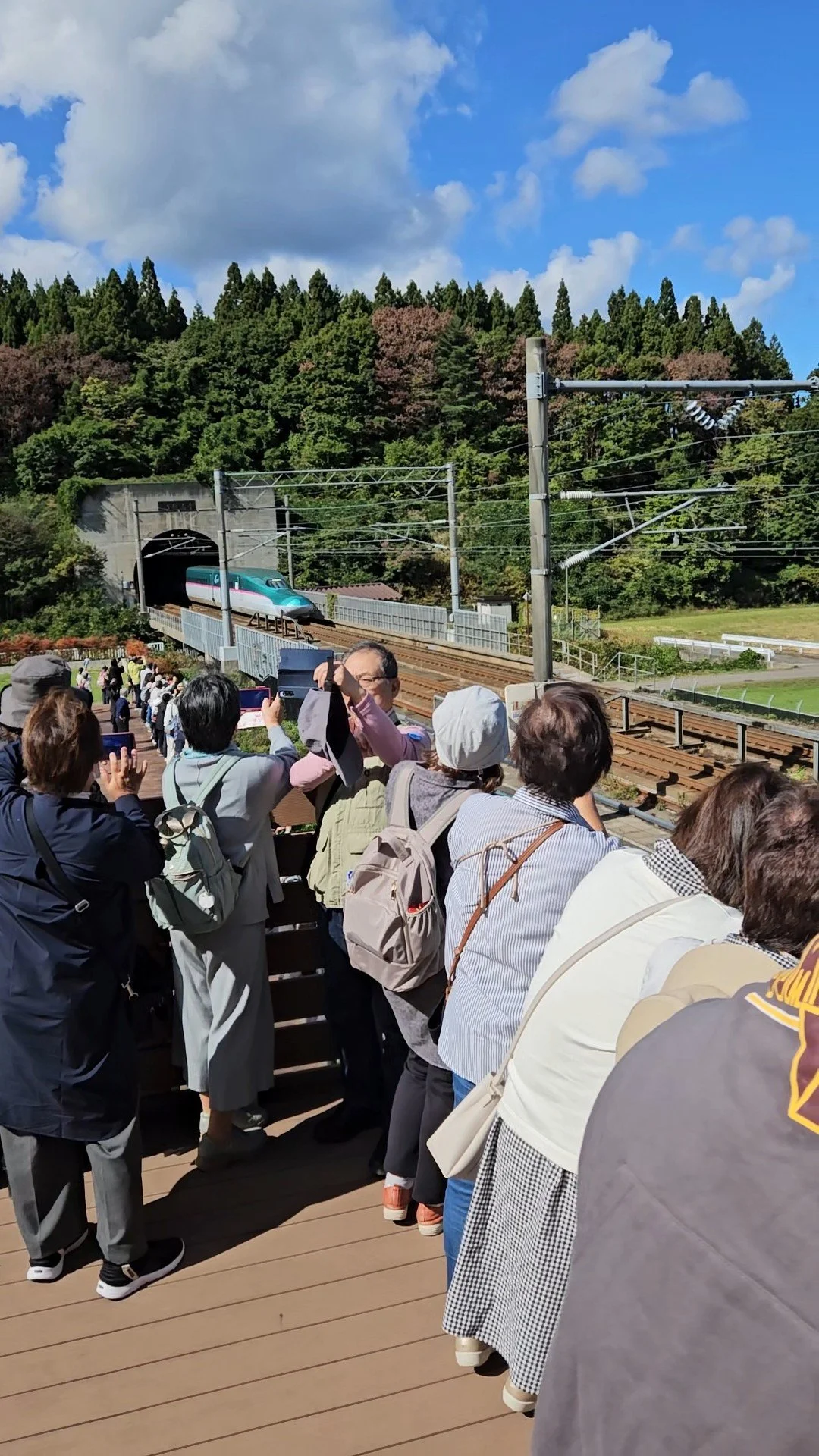Post-North Roundup
Japan has no shortage of travel writers, even in the historical sense.
Our home region of Tohoku even had a famous book of haiku written about it, by one of the greatest poetic masters ever born in Japan.
His name was Matsuo Basho, and he trekked from Tokyo (then Edo) to what is now Akita Prefecture in the late 1600s, writing haiku at many stops on the way. Living here, and creating content about Japan, comparisons to his journey are unavoidable.
Statue of Matsuo Basho at Yamadera
At the time of Basho’s journey, the Northeast part of Honshu was called Oku, or 奥. This kanji in modern times refers to the “deep” or “innermost” part of something. Caves, forests, castles; even the bottom of a person’s heart or mind.
There were no bullet trains, but there were bandits, and the journey was very difficult. The travelogue, called Oku no Hosomichi or “Narrow Road to the Deep North,” has since become one of the most-read books published in Japanese history.
Anyway, we went on a road trip to the deep north ourselves, recently! And I’m not a poet, but I’ll do my best.
Chuson-ji, Hiraizumi, Iwate Prefecture
I’ll say this about UNESCO: they pick ‘em pretty good.
Hiraizumi was declared the cultural capital of the North around a thousand years ago. At the time, one of the most powerful families in the country, the Fujiwaras, established it as their northern family branch’s home base. There was a brief period of peace immediately after, which allowed the arts to flourish. State-of-the-art architectural technique was studied, massive temple complexes and gardens were built, and people rushed in from all over on pilgrimages to soak it all in.
Unfortunately, Hiraizumi slid into obscurity between then and now. Clan infighting and a few regional wars led to the decline of the Fujiwaras, but the pilgrims kept coming. All these years later, it’s incredible how much has survived; even the entirely gold leaf pagoda of Chuson-ji is still holding on.
Motsu-ji, closest Temple to the station if I’m not mistaken, has a massive garden designed to resemble the Buddhist afterlife. It’s the kind of place that made me feel something that, even at the time, I knew I wouldn’t be able to describe later.
“Pure Land” style landscape, Motsu-ji, Hiraizumi, Iwate
We were there to try and predict how vibrant the Fall foliage was going to be, and if I had a spare 200 bucks, I’d be driving back up there this weekend. There’s no way it isn’t gorgeous!
After Hiraizumi, we headed all the way up to Aomori City, my third visit this year! I had some customer work in the area, so didn’t do much sightseeing exactly, but I was able to finally achieve a long-time goal: visit the Seikan Tunnel.
The Seikan Tunnel is what allows the train to connect Honshu and Hokkaido, similar to the Chunnel between France and the UK. The Seikan Tunnel is, I think at least for now, the longest undersea train tunnel in the world. Here’s what it looks like with a train coming out of it:
Seikan Tunnel Park, Aomori Prefecture
There is a Seikan Tunnel Museum way up at Cape Tappi, near the very top of Aomori Prefecture. Surprisingly, I’ve never heard of any Japan-based vloggers talking about this, but there’s an underground cable car you can ride all the way down to the depth of the tunnel itself?
The whole thing is guided, but I was very impressed! The Museum was a bit hard to reach since it’s in an incredibly rural location, but it was a very cool experience.
140 meters under the sea floor, Cape Tappi, Aomori Prefecture
While I was down there, both deep underground and at the northern end of Honshu, I couldn’t help but think of Matsuo Basho. And not just because I was in a prime location to title a sequel (“Oku no Hosomichi 2: Deeper, North-er”). He wrote a lot about why he was traveling between all those poems, and it’s sure to sound familiar to most people I meet in my new line of work.
In the intro to Oku no Hosomichi, he writes the following:
“Last year I spent wandering along the seacoast. In autumn I returned to my cottage on the river and swept away the cobwebs. Gradually the year drew to its close. When spring came and there was mist in the air, I thought of crossing the Barrier of Shirakawa into Oku. I seemed to be possessed by the spirits of wanderlust, and they all but deprived me of my senses. The guardian spirits of the road beckoned, and I could not settle down to work.”
Anyway, Aomori is great and we will be back! Hopefully I can return to Cape Tappi sometime for a thorough video; it’s a great example of an attraction that could benefit from some extra attention. It’s not easy to get to, but once you’re there it is very easy to appreciate what a feat of engineering it is!
More to come from this trip later.




